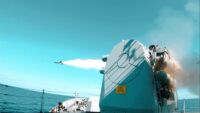By Major (R) Haroon Rasheed, Defense and Strategic Analyst specializing in South Asian military dynamics, deterrence strategy, and defense modernization. He is a member of the Research and Evaluation Cell for Advancing Basic Amenities and Development (REC ABAD).
In the silent corridors of global power, a new kind of race is unfolding — one not for oil or gold, but for rare earth elements (REEs). These are the hidden metals behind every smartphone, missile guidance system, electric vehicle, and radar array. Whoever controls them, controls the future of both industry and defense.
And right now, that control lies largely with China.
Bonded by Sacrifice – How Resistance Echoes from Palestine to Sudan Against Increasing Atrocities
Katrina Kaif, Vicky Kaushal Welcome a Baby Boy
400+ Flights Affected Across India After Delhi ATC Glitch, Airlines Issue Advisory
For more such Opinions & Blogs, click here.
The Chinese Grip on Rare Earths
Over the past three decades, China quietly built a monopoly on the mining, refining, and export of rare earth elements. Today, Beijing supplies nearly 70% of the world’s REEs and processes about 90% of global output. From neodymium used in fighter jet engines to dysprosium vital for electric vehicles — the modern world runs on resources refined in Chinese factories.
This dominance gives Beijing a powerful geopolitical lever. When trade tensions rise, China can squeeze the supply chain — as it did in 2010 when it cut REE exports to Japan after a territorial dispute. For the West, this is not just an economic risk — it’s a national security threat.
America’s Desperate Countermove
The United States, recognizing this vulnerability, is now scrambling to secure its own rare earth supply. Currently, it has just one operational mine — the Mountain Pass mine in California.
In a bold move, Washington has guaranteed the mine operators double the global market price for the next ten years. The aim is simple: ensure consistent domestic production even if prices fluctuate and encourage private investment in REE extraction and refining within U.S. borders.
It’s an expensive gamble, but one America feels it must take. Without secure access to these critical minerals, its defense industry — from F-35 fighters to advanced radar systems — risks dependency on a potential adversary.
‘Pakistan Zindabad’ Displayed on LED Signboards of Two Shops Located on Goa Beaches
Zohran Mamdani’s Victory: A Turning Point in U.S. Politics and the Beginning of Trumpism’s Decline
“8 Planes Shot Down”: Trump Updates Key Figure in India-Pak Peace Claim
New Frontiers: Pakistan and Australia
But America’s ambitions don’t stop at home. Facing the technical and environmental challenges of local mining, the U.S. has turned its attention abroad.
In recent months, American geological and strategic delegations have explored potential rare earth reserves in Pakistan’s Balochistan region and Australia’s Northern Territory. Both regions are rich in unexplored mineral belts, and both are strategically vital — Pakistan due to its proximity to China and the Arabian Sea, and Australia as part of the Western alliance’s resource security network.
For Pakistan, this presents a complex opportunity. With its vast mineral wealth, including copper, lithium, and rare earth traces in Chagai and Saindak, Pakistan could become a crucial node in the new mineral geopolitics — if it can ensure transparency, technology transfer, and environmental safeguards.
For the U.S., working with Pakistan would serve a dual purpose: diversifying its supply chain and subtly counterbalancing China’s Belt and Road influence in the region.
The Strategic Stakes
This isn’t merely about minerals — it’s about technological sovereignty. The modern battlefield, whether digital or physical, depends on rare earths. From precision-guided missiles and drones to green technologies, these elements underpin the next generation of warfare and economics alike.
China’s long-term vision — from its Made in China 2025 policy to dominance in clean tech — is anchored in its control over these resources. America’s counterstrategy, therefore, is to ensure it cannot be held hostage by that control.
The coming decade will likely see not just mining projects, but alliances built around rare earths — linking countries like Australia, Pakistan, Canada, and perhaps even African states, into a Western-led resource security bloc.
CJCSC meets Sultan, top civil, military leaderships of Brunei Darussalam
Kashmiris observing Jammu Martyrs’ Day
Punjab CM leaves for Brazil to attend COP 30 conference
Conclusion: The New Oil of the 21st Century
Rare earths are the new oil — silent, invisible, yet indispensable. The United States’ decision to back its only mine at double the price is a signal of desperation, but also of determination. It knows that without control over these elements, even the most advanced technologies can become vulnerable.
China, on the other hand, holds a commanding lead — one it built through decades of foresight. But as the global race for REEs intensifies, the world is entering an era where mineral diplomacy will shape power just as much as military might.
In this new great game, the nations that dig deepest — both in the ground and in strategic partnerships — will define the balance of power for decades to come.
For more such Opinions & Blogs, click here.
Afghanistan Faces 2.3 Million Ton Wheat Shortfall This Year
India draws ire for plotting to exclude Pakistan from SAARC Literature Festival
Another UP Madrasa sealed, Muslim community faces targeted harassment
Ex-UFC Champion BJ Penn Arrested for Sixth Time in 2025
India: The Fourth Most Dangerous Country in the World
Major (R) Haroon Rasheed is a Defense and Strategic Analyst specializing in South Asian military dynamics, deterrence strategy, and defense modernization. He is a member of the Research and Evaluation Cell for Advancing Basic Amenities and Development (REC ABAD).
Stay tuned to Baaghi TV for more. Download our app for the latest news, updates & interesting content!






